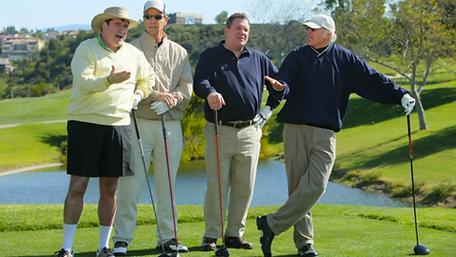Over the last decade, Golfers have begun to look more like a “typical athlete” than the stereotypical golfer of the previous decades.



Tiger Woods has not only grown the game of golf to the masses; he has changed the perspective of what a golfer should look like. The new generation of golfers that includes Rory McIlroy, Justin Thomas, Jason Day and Dustin Johnson are getting bigger and stronger, so they can drive the ball farther than they can see. So, the top golfers in the world for the last 15+ years are weight training…But should you?
Tiger Woods has been the model for the golfer to work out, his workout regimen in his prime was legendary. BUT his injury history is comprehensive and well documented (see infographic).

So, what does this mean for your weight training sessions?
To understand the proper training for golfers, we must delve into what golfers need to do to complete a round of golf. A round of golf includes three basic sections—walking, bending and lifting, and swinging. Each of these demands vastly different skills that include different muscles doing different tasks.
- Walking: To walk on a golf course requires ankle and hip stability to navigate a varied terrain, including up and down hills, side hill walking and going into and out of sand traps. You, also, need the endurance to walk 6.6 miles for the average golfer in an average round.
- Bending and Lifting: Golfers who carry their clubs and bag will carry 20-35 lbs for those 6.6 miles, but even if you don’t carry, you will bend to put the ball on the tee 18 times, bend to take the ball out of the cup 18 times, probably walk at least one hole carrying 3-4 clubs, and lift the bag from the car to the cart and back. All this bending and lifting requires your legs and back to be strong and stable to handle the movements and effort needed to perform all these tasks.
- Swinging: The golf swing is made up of 10 rotational axes that require varying times of flexibility and stability to create an efficient and proper swing. The proper swing is a delicate balance of posture, flexibility, balance, coordination and power which creates 8 times your body weight in spinal compression in the backswing, decreases to less than twice your body weight at impact and increases to 6-8 times your body weight during the follow through (all in 0.4 seconds). This happens between 40 and 75 times per round.
With all these physical demands, it is no wonder why so many pro golfers (let alone amateur golfers) are limited in their number of rounds (and quality of rounds) because of pain. Amateur golfer’s and pro’s injuries are as different as your drive and Tiger’s.

Professional golfer’s injuries tend to be more related to overuse, and amateur’s injuries tend to relate to poor form and poor fitness/stability.
Therefore, a good fitness and stability program will help the amateur golfer play more rounds, have less pain with golfing, and improve their performance through increased strength and decreased fatigue. I recommend downloading this Golfer’s Performance Circuit to hit all the golf muscles to create stability and power and improve conditioning to help you on the course.
A comprehensive stretching program (like this one put together by the Mayo Clinic) is an excellent compliment to a good strengthening program. The golf swing is the perfect example of how flexibility and power need to work together to create a repeatable and efficient swing.
So, Should I Weight Train During the Season?
The answer is YES!
During the season, complete the circuit 2-3 times per week, but use light weights to maintain the stability that you have. You should definitely intermix the weight training with good range sessions to maintain the distance control that is so crucial to scoring.
During the off-season, perform the circuit 3 times a week with heavier weights and lower repetitions. Be sure to include the comprehensive flexibility program from the Mayo Clinic to maintain your full motion needed to swing well while you bulk up in the off-season. If you perform these programs in the off-season, you will surely feel stronger (and possible gain distance) as the season begins, so make sure you spend extra time on the range before the season begins to best understand the changes in distance that your new-found strength has given you.
With a comprehensive off-season and in-season exercise program, your season will be filled with low scores and void of the aches and pains that can derail a great season.
So, stay healthy and hit ‘em straight this year!

